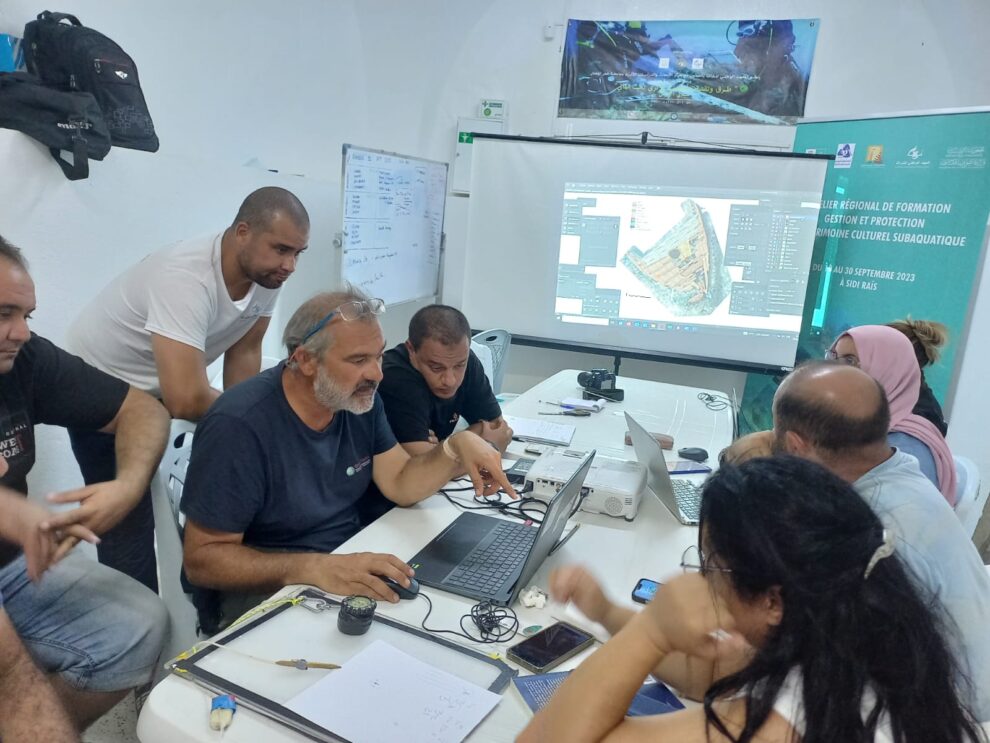From 18 to 30 September, UNESCO and the National Heritage Institute (INP) of Tunisia hosted a regional workshop on the management and protection of underwater cultural heritage at the archaeological site of Sidi Raïs in the Tunisian governorate of Nabeul. Bringing together researchers and specialists in underwater archaeology from Algeria, Libya, Morocco and Tunisia, this workshop featured both theoretical and practical hands-on training sessions.
Theoretical sessions were led by twelve representatives from international and national institutions, covering a wide range of essential topics. This comprehensive segment explored underwater photography, preventive conservation techniques for recovered underwater artifacts, treatment and storage methods, underwater archaeological excavation strategies, documentation techniques, as well as sustainable management of underwater cultural heritage.
Hands-on training took place at the shipwreck site of Carpis 4, allowing participants to learn about practical underwater archaeological research methods and diving activities. Located about a nautical mile from the shore, Carpis 4 contains the remains of amphorae of Italian origin dating back to the 1st century BCE. These amphoras were historically used for storing and transporting wines in various Roman provinces of the Mediterranean Basin.

The regional workshop contributes to the implementation of UNESCO 2001 Convention on the Protection of the Underwater Cultural Heritage, the only international legal framework focused on identification, research, protection and preservation of underwater cultural heritage. This capacity-building training establishes a network of experts to foster collaboration in the field of underwater archaeological research in the Arab States region. It also extends its positive influence on local communities and the wider public, raising awareness and appreciation for invaluable cultural heritage.
With the support of UNESCO, the workshop was hosted by the National Heritage Institute (INP) of Tunisia under the auspices of the Tunisian Ministry of Cultural Affairs and in collaboration with the Tunisian National Commission for UNESCO and the Agency for the Revival of Heritage and Cultural Development.
Source: UNESCO









